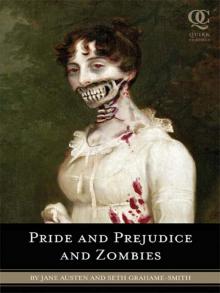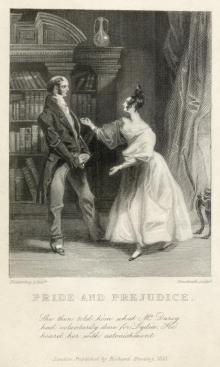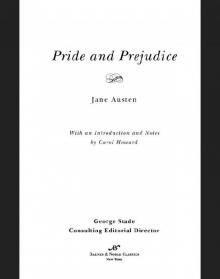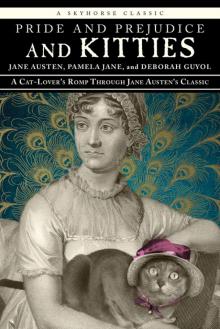- Home
- Jane Austen
Oxford World’s Classics Page 3
Oxford World’s Classics Read online
Page 3
Many of these revisions can be dated, either by internal reference or by hand. For example, two alterations in ‘Kitty’ were possible only in or after 1809. The first, Camilla Stanley’s reference to a ‘new Regency walking dress’ (replacing an original reference to a ‘Pierrot’), must post-date the Regency Act (5 February 1811).29 The second, the deletion of an allusion to ‘Seccar’s explanation of the Catechism’ (Thomas Secker’s Lectures on the Catechism of the Church of England (1769)) and substitution of ‘Coelebs in Search of a Wife’, must be later than December 1808, when Hannah More’s novel of that title was published. But it is most likely, given similarities of hand with his other teenage stories, that James Edward was writing into his aunt’s notebook in 1815 or 1816, when he was aged 16 or 17. In allowing niece and nephew to try their hands at continuations to the stories in Volume the Third and even permitting James Edward to edit ‘Kitty, or the Bower’, Jane Austen confirmed for the next generation of scribbling Austens the original function of the notebooks: to nurture authorship within family life.
* * *
Austen described her family as ‘great Novel-readers & not ashamed of being so’, even in a period when the novel’s status was proverbially low.30 Countless tales of adventure, mystery, and intrigue, featuring exotic locations and creaky, sensational plots, were published during her early years. Take Agnes Maria Bennett’s Anna; or Memoirs of a Welch Heiress, interspersed with Anecdotes of a Nabob (1785), a four-volume blockbuster of which one reviewer commented that ‘In some parts of it the incidents are scarcely within the verge of probability; and the language is generally incorrect’; however, ‘We have seen many worse novels’.31 Evidence of the Austens’ love of such outlandish fiction is stamped all over the teenage writings; it survives in romantic, fanciful names, such as Elfrida, heroine of the capsule novel with which Volume the First opens. Austen might have come across it in Elfrida; or Paternal Ambition. A Novel (1786); or she could have known of another Elfrida in Beatrice, or The Inconstant. A Tragic Novel (1788). There is yet another Elfrida in the later Agatha; or, A Narrative of Recent Events. A Novel (1796). The name also crops up in Frances Burney’s Cecilia; or, Memoirs of an Heiress (1782). We know that Austen read Burney avidly, so this may be where she discovered an Elfrida for the first time. But in view of her omnivorous taste for novels, other and long-forgotten titles are plausible contenders too.
The influence of Richardson’s epistolary fiction, as well as that of his imitators, is everywhere apparent in the teenage works—and not only in the formal sense that many of the pieces Austen writes are letters. In ‘Jack & Alice’, for example, the intolerably handsome Charles Adams descends from the peerless paragon of Richardson’s final novel, Sir Charles Grandison. Delivering a lengthy eulogy on himself—‘I am certainly more accomplished in every Language, every Science, every Art & every thing than any other person in Europe. My temper is even, my virtues innumerable, my self unparalelled’ (p. 20)—Adams takes to its natural conclusion the praise heaped on Richardson’s heroes and heroines and in turn repeated by them or by others in their letters. Adams, however, prides himself on his looks and abilities rather than on his charity or kindness, and Austen thereby perverts as well as honours her literary model. The teenage writings take gleeful aim at exemplary figures of all kinds, and therefore at their instructive value. When Mr Gower (in ‘Evelyn’) blithely exclaims, moments after meeting Mrs Willis, ‘Amiable Woman … What would I not give to be your Neighbour, to be blessed with your Acquaintance, and with the farther knowledge of your virtues! Oh! with what pleasure would I form myself by such an example!’ (p. 161), he is echoing novels that present their characters as models on whom readers might base their own conduct—as, indeed, do other characters within the fiction itself. The heroine of the epistolary novel Female Stability: or, The History of Miss Belville (1780) writes: ‘I often think, when I am going to do any thing material, would Augustus have acted thus? and endeavour to form myself by his excellent example.’32
The logical consequence of such pervasive copying would be a world populated by duplicates or automatons. This is the world of the teenage writings. Austen replays and accentuates the symmetrical gestures and mirrored emotions that, like coincidences, pepper sentimental novels of the late eighteenth century. She appears to have digested and regurgitated novelistic mechanisms so quickly as to make herself feel giddy—fainting is among her favoured comic scenarios—and the early works are best approached as a variety of fan fiction. Duplication is funny in itself, perhaps especially to two sisters of whom their mother reportedly said ‘if Cassandra’s head had been going to be cut off, Jane would have her’s cut off too’.33 The varieties of rehashing that occur at the culinary level, in some tales, play out with equally skilled economy at the literary level. (The parallel nature of these female activities is brought home by the fact that the same kind of stationer’s quarto notebook was used by Jane Austen’s close friend Martha Lloyd to jot down recipes as was employed by Austen to copy out her teenage experiments in fiction.) Good housekeeping, a key principle of female upbringing, is both sent up and exemplified in the way Austen deploys and redeploys her sources. Take her reference to ‘making a Curry’ for the ailing Maria in ‘A beautiful description’ (p. 64). The culinary aspect of the quip is that this spicy dish will hardly suit the delicate stomach of an invalid. But Austen is also flipping a joke made in ‘The Visit’ (p. 47), in which a soothing drink, fit for an invalid, is served up to a young, healthy woman. Such neat, efficient reversals are a form of recycling; they also show how quickly Austen learnt the rules of comic writing. What cuts one way cuts the other. This rule applies to gender as well as to cooking and jokes: the teenage skits contain some striking, wilful exchanges of male and female behaviour. In ‘Edgar & Emma’ (p. 25), Thomas the footman is cast in the role of a female confidante for Emma, while ‘The History of England’ imagines Lambert Simnel as the widow of Richard III (p. 124). Women rather than men pass around the bottle and drink with cheery abandon (p. 48), and Hamlet’s celebrated speech ‘What a piece of work is a man!’ is parodically recast as ‘Oh! what a silly Thing is Woman!’ (p. 202).
* * *
Jane Austen’s early writings are concerned with people and events that manifestly do or manifestly do not merit our interest. Time and again, they narrate either an excess of action and accomplishment, or the complete absence of both. In Volume the First, we are told of the hero of ‘Jack & Alice’, who fails to appear in the story, that he ‘never did anything worth mentioning’ (p. 20). In Volume the Second, we learn in passing that tragedy is ‘not worth reading’ (p. 124). Austen describes ‘Frederic & Elfrida’ as a ‘little production’, a word that implies dramatic exhibition as well as the product of writing (p. 2). Later in the same volume, the prose fiction ‘Sir William Mountague’ is billed, with a similar theatrical flourish, as ‘an unfinished performance’ (p. 34). Austen writes with an awareness of being watched, and she creates parts for characters who, without having anything much to show or tell, long for an audience.
The solemn rites of induction into authorship, as well as the related condition of being celebrated, are always in this writer’s mind. ‘Kitty, or the Bower’ shows a sophisticated awareness of how novels were puffed to their prospective readers; the dedication mentions Cassandra Austen’s ‘warm patronage of The beautiful Cassandra, and The History of England, which through your generous support, have obtained a place in every library in the Kingdom’ (p. 169). That phrasing echoes the terms in which contemporary fiction was advertised. The title page of Edward and Harriet, or The Happy Recovery; A Sentimental Novel (1788), states that the work ‘may be had at every Circulating Library in the Kingdom’, while Charles Dibdin’s The Younger Brother: A Novel (1793) includes a bookseller, Mr Allen, who boasts: ‘look at this drawer: full, chuck full—all novels—I supply every library in the kingdom’.34 In the dedication to her brother James of ‘The Visit’, Austen refers to what may be lost works of her own, or possibly his,
or perhaps just titles of works they dreamt up between them: ‘those celebrated Comedies called “The school for Jealousy” & “The travelled Man” ’ (p. 44). Such titles place her squarely in the dramatic, anti-sentimental company of Richard Brinsley Sheridan and Oliver Goldsmith. Henry Tilney twits Catherine in Northanger Abbey with his reference to ‘the easy style of writing for which ladies are so generally celebrated’ (ch. 3). But, in celebrating her own works in this arch manner—if that is indeed what she is up to—the young Jane Austen is also setting herself apart from them. Ladies were not typically celebrated for writing comedies. Not long before Austen began her teenage skits, Burney was composing and then reluctantly suppressing her satirical drama The Witlings (written 1778–9).35
As a 15-year-old, Burney dedicated the account in her journal of ‘my wonderful, surprising & interesting adventures’ to ‘Nobody’. In choosing to do so, she was well aware that namelessness appears to cancel out, or at least radically to compromise, our ability to celebrate anyone. But anonymity—a convention of eighteenth-century novels—also licenses storytelling.36 Part of the apparatus of mock reality, this sham decorum is intended to suggest that the tale we are reading originated in real life. Hence Austen’s glancing references to a ‘Miss XXX’ in ‘The three Sisters’ (p. 54) and to ‘M.’ and ‘F.’ in ‘Henry & Eliza’ (p. 28), which imitate the practice of abbreviating or concealing the names of characters as if they were real people. ‘The beautifull Cassandra’ is, we are told, ‘the Daughter and the only Daughter of a celebrated Millener in Bond Street’ (p. 38). No name is supplied, although we have the address. Other names are cryptically represented: ‘the Dutchess of—’s Butler’ (p. 38); ‘the Countess of—’ (p. 38). The heroine encounters an otherwise unidentified Viscount, ‘a young Man, no less celebrated for his Accomplishments & Virtues, than for his Elegance & Beauty’ (p. 38). Contributing to this joke about namelessness is the sheer banality of the terms of praise; in late eighteenth-century novels, ‘Accomplishments’ and ‘Virtues’, like ‘Elegance’ and ‘Beauty’, are as briskly circulated as is the bottle of gooseberry wine in ‘The Visit’. ‘The beautifull Cassandra’, like ‘The Mystery’—a playlet in which the cast of whispering characters apparently understand one another perfectly, but we never find out what they are discussing—contains important fuss about something that may add up to nothing at all.
* * *
Alongside schoolroom histories and conduct books, Francis Grose’s Classical Dictionary of the Vulgar Tongue (1785), which combines the pedagogical form of a lexicon with thieves’ cant and low language, is one likely inspiration for the mock-authoritative quality of Austen’s teenage writings. The revised title of Grose’s Classical Dictionary, when it reappeared in expanded form in 1811, was A Dictionary of Buckish Slang, University Wit, and Pickpocket Eloquence, emphasizing a strain of male undergraduate humour that had been there from the beginning. The new title gestures more clearly towards a certain type of minor character in the works of Jane Austen—idle, well off, not very bright young men at the university. Through her brothers, who were students at Oxford in the late 1780s, she could have encountered plenty of drawling loungers and loiterers like John Thorpe in Northanger Abbey, the type to enjoy innuendo and dirty jokes such as those Austen makes about King James’s ‘keener penetration’ in her ‘History of England’ (p. 132)—punning that is carried over into Mary Crawford’s infamous ‘Rears and Vices’ quip in Mansfield Park (ch. 6). The teenage Austen was writing for a boisterous audience. She may well have been producing and performing her early works for a group including young male lodgers, since her father took in boys for tutoring as a way to supplement his income (this is how Cassandra’s fiancé, Thomas Fowle, was introduced to the Austen family).37 It is easy to see how such a domestic arrangement could prove congenial to highly charged, flirtatious performances, and that it might prompt hysterical laughter whenever a hint of sexual impropriety emerged. Take the phrase ‘family of Love’, which crops up in ‘Jack & Alice’. It originates as the name of a sixteenth-century religious sect; by the eighteenth century, however, it is commonly deployed in novels and without any religious implication to describe a happy, virtuous household. In Edward. A Novel (1774), James Wharton declares: ‘there is not so enchanting a society as that of a well-regulated family, a family of love’.38 But the phrase had a far less reputable connotation that may also have been in Austen’s mind; in Grose’s Classical Dictionary, ‘family of love’ is said to mean ‘lewd women’. Language can serve both to disguise and uncover bad behaviour, like the masks and costumes sported at masquerades. As a teenager, Austen leapt upon words and phrases that could be pressed to accommodate the full range of virtue and vice.
Under- and overstatement, like other measures of insufficiency or excess, are the engines of her comedy; they are partly responses to conduct books and to any models of decorum and restraint. One of the keywords in the teenage writings is the busy, unobtrusive ‘too’—as in ‘too high’, ‘too much’, ‘too small’, ‘too great’. Time and again, what is striking about the geography and pace of the three volumes is that things are made to go excessively fast, or comically slowly; that places are too far away, or too close to one another, for the time spent in getting to them to be credible. As is shown from her revisions, Austen tended to make these jokes more extreme when she had the chance to reconsider them. There is a wider, and a wilder, range of places in the teenage writings than in the mature novels. In middle age, Austen advised her niece Anna not to travel in fiction where she had not been in life, but she did not follow that counsel in her own early works.39 Volume the Second reflects a craze for Scottish travel, landscape, and music, and takes in Gretna Green, Edinburgh, Sterling, Aberdeen, Perth, and Dunbeath. As in the mature novels, and as in the pulp fiction Austen would have been reading, the fashionable streets and pleasure grounds of central London play a key role—Portland Place, Queen’s Square, Brook Street, Bond Street, Bloomsbury Square, Portman Square, Sackville Street, Grosvenor Street, Vauxhall, and Ranelagh Gardens—as well as the less respectable Holborn, King’s Bench Prison, and Newgate Prison.40 A few entirely fictional locations appear in the teenage writings—Crankhumdunberry, Pammydiddle, Chetwynde, and Evelyn—but two of these are located in or near real places, Chetwynde near Exeter and Evelyn in Sussex. Characters in these miniature books not only travel oddly across the landscapes in which they feature—in one tale, running and hopping sweatily alongside a galloping pony—they also know startlingly little about where anything is. When, in ‘Kitty’, Camilla Stanley imagines ‘a delightful voyage to Bengal or Barbadoes’, the locations are paired simply because they begin with ‘B’ (p. 178). In ‘Love and Friendship’, Edward remarks:
My Father’s house is situated in Bedfordshire, my Aunt’s in Middlesex, and tho’ I flatter myself with being a tolerable proficient in Geography, I know not how it happened, but I found myself entering this beautifull Vale which I find is in South Wales, when I had expected to have reached my Aunts. (p. 73)
* * *
Henry Austen remarked of his sister that she became ‘at a very early age … sensible to the charms of style, and enthusiastic in the cultivation of her own language’.41 The teenage writings allow us to chart the progress of that early, acute attention to high and low style and language. Any reasonably well-educated girl of the 1780s and 1790s could be expected to show familiarity with Samuel Johnson and Alexander Pope—the most celebrated prose-writer and the most celebrated poet of the century—whether that was through reading their works in their entirety, or via anthologies of ‘beauties’ and ‘elegant extracts’. Austen owned one such anthology and passed it on to her novel-writing niece, Anna.42 The habit of excerpting is itself presented as something of a joke in a passing reference to ‘Sentiments of Morality’ (‘The female philosopher’ (p. 151)), and in the dedication of ‘Collection of Letters’, a work described as ‘this Clever Collection of Curious Comments, which have been Carefully Culled, Collected & Classed by your
Comical Cousin’ (p. 134).
Johnsonian syntax and snatches of Pope contribute to the ‘Style entirely new’ of Austen’s teenage writings, as celebrated on the inside cover of Volume the Third. As befits the mock-heroic register of these works, in which, as Pope phrased it in 1714, ‘mighty Quarrels rise from trivial Things’43 and vanishingly slight subjects are yoked to the most lavish praise, Austen can allude to her productions as ‘interesting’ and ‘complete’, while virtually in the same breath calling them ‘short’, ‘little’ and ‘unfinished’, ‘Scraps’ and ‘Morsels’. The reference in ‘Frederic & Elfrida’ to ‘Patches, Powder, Pomatum & Paint’ (p. 5) loudly and clearly echoes the most celebrated list in eighteenth-century literature: ‘Puffs, Powders, Patches, Bibles, Billet-doux’.44 Austen sometimes employs syllepsis, or zeugma, whereby one verb governs two different, incongruous objects—as in ‘Jack & Alice’, where ‘cruel Charles’ is said ‘to wound the hearts & legs of all the fair’ (p. 18). It is a technique she probably learned from Pope’s Rape of the Lock, in which Queen Anne’s dignity is vaguely compromised when she is said to ‘take’ both ‘Counsel’ and ‘Tea’.45

 Sense and Sensibility
Sense and Sensibility Persuasion
Persuasion Mansfield Park
Mansfield Park Northanger Abbey
Northanger Abbey Pride and Prejudice and Zombies
Pride and Prejudice and Zombies Pride and Prejudice
Pride and Prejudice Emma
Emma Persuasion (Dover Thrift Editions)
Persuasion (Dover Thrift Editions) Lady Susan
Lady Susan Northanger Abbey (Barnes & Noble Classics)
Northanger Abbey (Barnes & Noble Classics) Lady Susan, the Watsons, Sanditon
Lady Susan, the Watsons, Sanditon Darcy Swipes Left
Darcy Swipes Left Persuasion: Jane Austen (The Complete Works)
Persuasion: Jane Austen (The Complete Works) Mansfield Park (Barnes & Noble Classics Series)
Mansfield Park (Barnes & Noble Classics Series) Sense and Sensibility (Barnes & Noble Classics Series)
Sense and Sensibility (Barnes & Noble Classics Series) The Annotated Sense and Sensibility
The Annotated Sense and Sensibility Pride and Prejudice (Clandestine Classics)
Pride and Prejudice (Clandestine Classics) Persuasion (AmazonClassics Edition)
Persuasion (AmazonClassics Edition) Persuasion (Barnes & Noble Classics Series)
Persuasion (Barnes & Noble Classics Series) Complete Works of Jane Austen
Complete Works of Jane Austen The Watsons and Emma Watson
The Watsons and Emma Watson Northanger Abbey and Angels and Dragons
Northanger Abbey and Angels and Dragons Love and Friendship and Other Early Works
Love and Friendship and Other Early Works Emma (Barnes & Noble Classics Series)
Emma (Barnes & Noble Classics Series) Sanditon
Sanditon Pride and Prejudice (Barnes & Noble Classics Series)
Pride and Prejudice (Barnes & Noble Classics Series) Pride and Prejudice and Kitties
Pride and Prejudice and Kitties The Annotated Northanger Abbey
The Annotated Northanger Abbey Oxford World’s Classics
Oxford World’s Classics Northanger Abbey (Barnes & Noble Classics Series)
Northanger Abbey (Barnes & Noble Classics Series) The Annotated Persuasion
The Annotated Persuasion Emma (AmazonClassics Edition)
Emma (AmazonClassics Edition) The Annotated Emma
The Annotated Emma The Annotated Mansfield Park
The Annotated Mansfield Park The Annotated Pride and Prejudice
The Annotated Pride and Prejudice